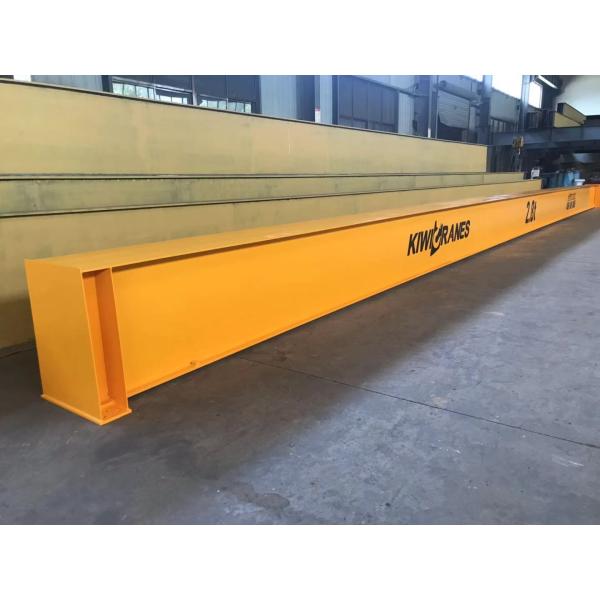10Ton Electris Single girder overhead crane applies to Construction
Site Lifter,warehouse
1. Simple structure and light weight:
The main beam adopts a single I-beam (usually reinforced) or box
beam structure.
Compared with double-beam bridge cranes of the same tonnage, the
overall structure is simpler and the deadweight is lighter.
Advantages: Reduce the structural load requirements of the plant,
save steel, and the manufacturing, installation and transportation
costs are relatively low.
2. Low manufacturing cost and good economy:
The simple structure directly leads to lower material and
processing costs.
It is one of the most cost-effective options when meeting the
lifting capacity requirements of 10 tons and below.
Advantages: The initial investment is relatively small and the
return on investment is high.
3. Easy installation and maintenance:
The structure is not complicated and the parts are relatively few.
The installation and commissioning cycle is usually shorter than
that of double-beam cranes.
Daily inspection, lubrication, and replacement of wearing parts
(such as wheels, wire ropes, brushes) are relatively easy.
Advantages: Reduce installation time and cost, and reduce the
difficulty and cost of later maintenance.
4. Flexible operation mode:
Most common: Ground operation (follow-up): The operator follows the
crane on the ground through the hanging button box (flashlight).
The operation is intuitive, flexible and has good sight.
Optional: Cab operation: Equipped with a driver's cab, the operator
controls in the cab. Suitable for situations with large workload,
long running distance or environmental isolation.
Optional: Remote control operation: Operators can control at the
best viewing position through a wireless remote control, with high
flexibility, especially suitable for high temperature, dust and
other environments.
Advantages: The most suitable operation mode can be selected
according to the working conditions.5. Operation mechanism:
Operation mechanism: Trolley operation: Drive the wheels on the end beams on both sides
to make the crane move longitudinally along the factory track.
Usually a "three-in-one" drive mechanism (motor, brake, and reducer
integrated into one) is used, with a compact structure and high
reliability.
Trolley operation: The electric hoist moves horizontally along the
lower flange track of the main beam. The running speed is usually
faster than that of the trolley.
Lifting mechanism: Completed by the electric hoist. 10 ton common
wire rope electric hoist (such as CD1/MD1 or more advanced chain
hoist). The lifting speed can be selected according to the needs
(standard speed is about 7-8 m/min, slow speed/double speed is
optional).
Advantages: stable operation and relatively accurate positioning
(higher configuration is required when the accuracy requirement is
extremely high).

 Operation mechanism:
Operation mechanism: